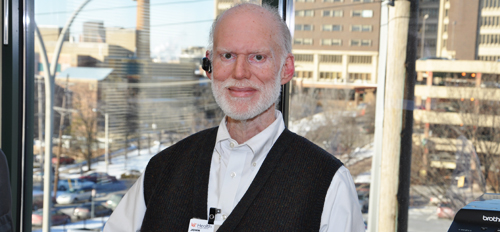The world has wept a collective tear during the last several months following the surge of babies born with small heads and underdeveloped brains, the unproven but likely effect of mothers infected with the mosquito-borne Zika virus during pregnancy. But babies may not be the only ones at risk from complications of Zika, which is carried by the Aedes aegypti mosquito.
The World Health Organization (WHO), in its “Zika Situation Report” of Feb. 26, stated that although links to the Zika virus infection remain circumstantial, “a growing body of clinical and epidemiological data points towards a causal role for Zika virus” not only in the microcephaly seen in newborns, but also in Guillain-Barré syndrome (GBS). Guillain-Barré is a rare and potentially life-threatening autoimmune disorder in which the body attacks the peripheral nerves and damages their insulating layer (the myelin sheath).
WHO reports that during 2015 and 2016, eight countries and territories have reported an increased incidence of GBS and/or laboratory confirmation of a Zika virus infection among GBS cases. A study by researchers in French Polynesia and Europe, published this week in the Lancet, provides strong new evidence of a link between Zika and GBS.
Though less publicized than the deepening microcephaly crisis, GBS is no stranger to the United States, nor to the University of Cincinnati Neuroscience Institute. John Quinlan, MD, a UC Health neurologist and medical director of the institute’s Neuromuscular Center, says he and his colleagues treat 10 to 15 patients with Guillain-Barré each year.
“Some cases are caused by a viral infection, some by a bacterial infection, some by a vaccine,” Dr. Quinlan says. “Many times we don’t know what the cause is.”
Guillain-Barré usually begins with weakness of the legs and mild numbness and tingling in the feet and moves upward. Over days to weeks it can progress to paralysis of the breathing muscles and death. But when caught early, it is curable in most situations. The syndrome can strike people of any age.
“The disease is particularly worrisome because it can attack someone who’s perfectly healthy,” Dr. Quinlan says. “And it comes on pretty fast, over days. It could take a person from normal health to paralysis in five days. And that wouldn’t be a record.”
The good news, he says, is that “we can make such a difference in the outcome.”
Diagnosis can involve the following tests:
• Spinal tap, which can reveal a protein associated with GBS
• Electromyography, which measures nerve activity in the muscles
• Nerve conduction studies, which measure the speed of nerve signals
Because a spinal tap early in the course of the disease can be normal, Dr. Quinlan, a professor of neurology and rehabilitation medicine, teaches his resident physicians to “keep it simple” and focus on testing the patient’s strength exam, reflexes and breathing capacity. “The first thing I’ll ask residents is, ‘What is their breathing capacity like?’ And then we track that carefully.”
Treatment involves one of two therapies:
- administration of high doses of intravenous immunoglobulin, which contains healthy antibodies from blood donors; or
- plasmapheresis, which rids the body of antibodies that are attacking the nerves. Both treatments are equally effective in slowing and eventually stopping the disease and allowing the nervous system to repair itself.
Some patients may need to be placed on a ventilator. Complications that lurk include pneumonia, pulmonary embolism from lack of movement, and cardiac problems. Two-thirds of patients who are treated early will return to normal over a period of weeks to months, Dr. Quinlan says, but the remainder have a slower and incomplete recovery. The death rate is about 5 percent.
Anyone who experiences an unusual weakness of the limbs that worsens over days should call his or her doctor or go to the emergency room, regardless whether or not they visited a country where Zika virus is present.
“Remember,” Dr. Quinlan says, “we see plenty of GBS cases that have nothing to do with Zika.”
For more information about Guillain-Barré syndrome, visit the National Institute of Neurological Disorders and Stroke.
— Cindy Starr



